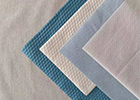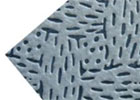Non-Woven Fabrics: Sustainable Alternatives and Environmental Impact
Introduction
In the world of textiles, there are various types of fabrics available, each with its own unique characteristics and uses. One such type is non-woven fabric, which is gaining popularity due to its versatility and eco-friendly nature. In this blog post, we will delve into the definition and explanation of non-woven fabrics and explore the importance of considering their environmental impact.
Definition and explanation of non-woven fabrics
Non-woven fabrics are manufactured using a process that does not involve traditional weaving or knitting techniques. Instead, they are created by bonding fibers together mechanically, chemically, or through heat. This bonding process results in a fabric that is strong, durable, and resistant to tearing and fraying.
One of the main advantages of non-woven fabrics is their versatility. They can be made from a wide variety of materials, including both natural fibers like cotton and synthetic fibers like polyester. This allows for a range of applications, from medical and hygiene products to geotextiles, automotive interiors, and filtration systems.
Moreover, non-woven fabrics have excellent moisture absorption properties and are breathable, making them suitable for use in products that require moisture management, such as diapers and wipes. They also have low linting properties, making them ideal for use in cleanroom environments.
Importance of considering environmental impact in fabric choices
With a growing global concern for sustainability, it is crucial to consider the environmental impact of our fabric choices. Non-woven fabrics offer several advantages in this regard. Firstly, they consume less energy and water during the manufacturing process compared to traditional woven fabrics. This reduces the carbon footprint associated with their production.
Additionally, non-woven fabrics can be recycled and reused, further reducing waste and promoting a circular economy. Their biodegradability also makes them a better choice for the environment compared to synthetic materials that take years to decompose.
It is important for consumers and manufacturers alike to prioritize sustainable options when it comes to fabric choices. By choosing non-woven fabrics, we can contribute towards a greener and more sustainable future for the textile industry. So next time you consider purchasing a fabric, why not opt for the eco-friendly option of non-woven fabrics?
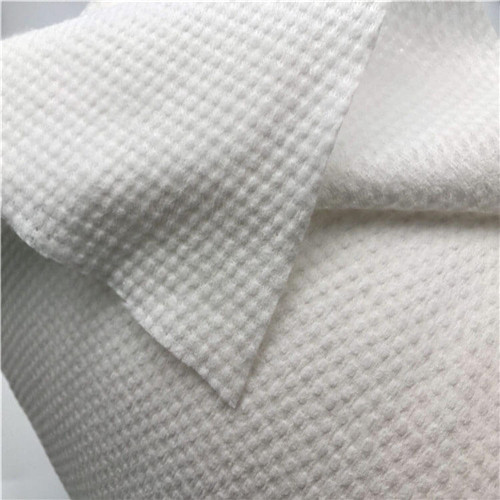
Non-woven Fabrics and the Environment
Overview of the environmental implications of non-woven fabrics
Non-woven fabrics are gaining popularity in the textile industry due to their versatility and eco-friendly nature. These fabrics are manufactured without traditional weaving or knitting techniques, but through bonding fibers together mechanically, chemically, or through heat. This results in a strong, durable fabric that is resistant to tearing and fraying.
One of the main advantages of non-woven fabrics is their diverse range of applications. They can be made from natural fibers, like cotton, or synthetic fibers, like polyester. This allows for the production of a wide variety of products, including medical and hygiene products, automotive interiors, geotextiles, and filtration systems. Non-woven fabrics also have excellent moisture absorption properties and breathability, making them ideal for products like diapers and wipes.
Analysis of the manufacturing process and its environmental impact
Non-woven fabrics have several environmental advantages compared to traditional woven fabrics. Firstly, they require less energy and water during the manufacturing process, thereby reducing the carbon footprint associated with their production. Additionally, these fabrics can be recycled and reused, promoting a circular economy and minimizing waste.
Moreover, non-woven fabrics biodegrade naturally, making them a more sustainable choice compared to synthetic materials that take years to decompose. By choosing non-woven fabrics, consumers and manufacturers can contribute to a greener and more sustainable future for the textile industry.
It is vital for both consumers and manufacturers to prioritize sustainable options when it comes to fabric choices. By opting for non-woven fabrics, we can reduce our environmental impact and promote a more eco-friendly textile industry. Next time you consider purchasing fabric, why not choose the environmentally-friendly option of non-woven fabrics?
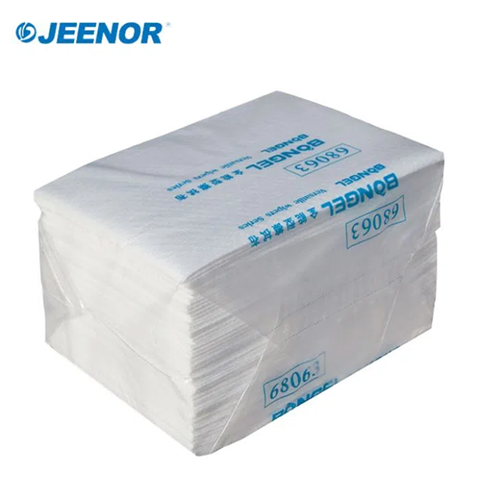
Biodegradability of Non-woven Fabrics
Exploration of the biodegradability of non-woven fabrics
Non-woven fabrics have gained popularity in the textile industry due to their versatility and eco-friendly nature. These fabrics are manufactured without traditional weaving or knitting techniques, but through bonding fibers together mechanically, chemically, or through heat. This results in a strong, durable fabric that is resistant to tearing and fraying.
One of the main advantages of non-woven fabrics is their biodegradability. Unlike synthetic materials that take years to decompose, non-woven fabrics naturally break down over time, making them a more sustainable choice. When disposed of in the environment, these fabrics will eventually degrade and return to nature, minimizing their lasting impact.
Comparison to other types of fabrics in terms of biodegradability
Compared to traditional woven fabrics, non-woven fabrics have a clear advantage when it comes to biodegradability. Traditional fabrics, such as cotton or polyester, may take a significantly longer time to decompose in the environment. This leads to accumulation of waste and pollution, contributing to environmental degradation.
Additionally, non-woven fabrics can be recycled and reused, further minimizing their environmental impact. By promoting a circular economy, where materials are reused rather than disposed of, we can reduce the amount of waste generated and conserve resources.
In conclusion, non-woven fabrics offer a more sustainable alternative to traditional woven fabrics. Their biodegradability and potential for recycling make them a favorable choice for those looking to reduce their environmental impact. By choosing non-woven fabrics, we can contribute to a greener and more sustainable future for the textile industry.

Raw Materials Used in Non-woven Fabrics
Discussion of the raw materials used in non-woven fabrics
Non-woven fabrics have gained popularity in the textile industry due to their versatility and eco-friendly nature. These fabrics are manufactured without traditional weaving or knitting techniques but through bonding fibers together mechanically, chemically, or through heat. This results in a strong, durable fabric that is resistant to tearing and fraying.
The raw materials used in non-woven fabrics can vary depending on the desired properties of the final product. Commonly used fibers include polyester, polypropylene, rayon, and cotton. These fibers can be sourced from natural or synthetic materials, providing flexibility in terms of sustainability and environmental impact.
Assessment of their sustainability and environmental impact
When considering the sustainability and environmental impact of the raw materials used in non-woven fabrics, several factors come into play.
Firstly, non-woven fabrics made from natural fibers, such as cotton or rayon, have a lower impact on the environment compared to those made from synthetic fibers. Natural fibers are renewable resources that can be grown and harvested sustainably, reducing the reliance on fossil fuels.
Secondly, the manufacturing process of non-woven fabrics plays a crucial role in their sustainability. Processes that utilize less energy and water, and produce minimal waste and emissions, are considered more environmentally friendly. By adopting cleaner production methods, the overall environmental impact of non-woven fabrics can be significantly reduced.
Furthermore, the ability to recycle and reuse non-woven fabrics adds to their sustainability. By diverting waste from landfills and reducing the demand for virgin materials, the textile industry can move towards a more circular economy that promotes resource conservation.
In conclusion, the raw materials used in non-woven fabrics can vary in terms of their sustainability and environmental impact. However, by choosing natural fibers and adopting cleaner production methods, the textile industry can minimize its ecological footprint. Non-woven fabrics offer a promising solution for a more sustainable and eco-friendly future.

Energy Consumption in Non-woven Fabric Production
Analysis of energy consumption during the production of non-woven fabrics
When evaluating the energy consumption involved in the production of non-woven fabrics, it is crucial to consider the various stages of the manufacturing process.
The initial stage, which involves fiber preparation and blending, typically requires energy to power machines that clean and prepare the fibers. Subsequently, the bonding process, whether it is mechanical, chemical, or heat-based, often relies on energy-intensive machinery.
The final stage, which includes finishing and post-processing, also requires energy for processes such as drying, calendering, and coating. Overall, the production of non-woven fabrics can be energy-intensive, and it is essential to assess ways to mitigate this impact.
Consideration of alternative energy sources for a more sustainable process
To make the production of non-woven fabrics more sustainable and energy-efficient, the industry has started exploring alternative energy sources.
Renewable energy, such as solar power, can be utilized to generate electricity for various stages of production, reducing reliance on fossil fuels and lowering carbon emissions. Additionally, wind power and hydropower can also be harnessed to supplement energy needs.
Implementing energy-saving technologies and equipment is another approach to decrease energy consumption during production. Upgrading machinery to more efficient models and optimizing production processes can lead to significant energy savings.
Furthermore, investing in research and development of green and sustainable materials can contribute to a more energy-efficient production process. By using innovative fibers and chemicals, the industry can reduce the energy required for bonding and processing.
In conclusion, assessing and addressing the energy consumption involved in the production of non-woven fabrics is crucial for achieving a more sustainable industry. By analyzing different stages of production and considering alternative energy sources, the textile industry can make significant strides towards reducing its environmental impact.
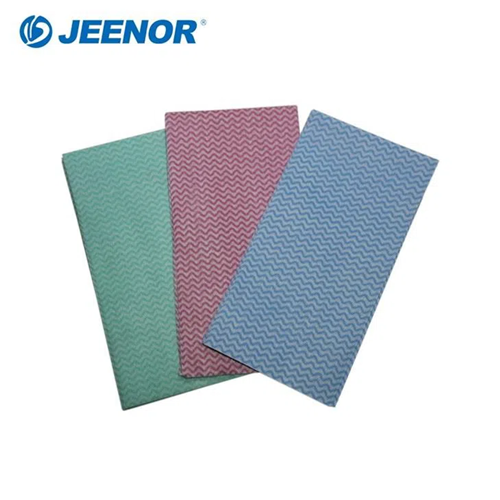
Waste Generation and Disposal of Non-woven Fabrics
Overview of the waste generated from non-woven fabric production
When examining the waste generated during the production of non-woven fabrics, it is important to consider the different types and quantities of waste produced at various stages.
The initial stage of fiber preparation and blending can result in the generation of waste fibers, lint, and rejects from quality control processes. The bonding process may produce excess adhesive or heat-generated waste, depending on the method used. Finally, finishing and post-processing stages can generate waste in the form of scraps, trimmings, and chemicals.
The amount of waste generated is determined by various factors, including production volume, efficiency of production processes, and quality control measures.
Explanation of potential disposal methods and their impact
Disposing of waste in a responsible and environmentally-friendly manner is crucial for the non-woven fabric industry.
One common method of waste disposal is landfilling, where waste materials are buried in designated sites. However, landfilling can have negative environmental impacts, such as the release of harmful substances into the soil and the emission of greenhouse gases.
Another disposal option is incineration, where waste materials are burned. While this method can generate energy through waste-to-energy plants, it also produces air pollution and contributes to carbon emissions.
Recycling and reuse are more sustainable alternatives to traditional disposal methods. Materials such as waste fibers and trimmings can be converted into secondary products or used as raw material in other industries. Additionally, investing in innovative recycling technologies and processes can help reduce the dependence on landfills and incineration.
Furthermore, implementing waste reduction strategies, such as improving production efficiency, optimizing material usage, and implementing quality control measures, can minimize waste generation from the start.
In conclusion, the non-woven fabric industry must address the waste generated during production by adopting responsible waste management practices. Through recycling, reuse, and waste reduction techniques, the industry can minimize its environmental impact and move towards a more sustainable future.

Recycling Potential of Non-woven Fabrics
Discussion on the recyclability of non-woven fabrics
Non-woven fabrics play a significant role in numerous industries due to their versatility and functional properties. However, the disposal of waste generated from their production has raised concerns about environmental sustainability. Recycling non-woven fabrics can be a promising solution to reduce waste and promote a circular economy.
Non-woven fabrics can be made from a variety of materials, including natural fibers like cotton or synthetic fibers like polyester. Although the recyclability of non-woven fabrics depends on their composition, advancements in recycling technologies have made it possible to recycle both natural and synthetic non-woven fabrics.
Recycling non-woven fabrics offers several benefits. It reduces the demand for virgin materials, conserves resources, and reduces energy consumption and greenhouse gas emissions associated with the production of new fabrics. Additionally, recycled non-woven fabrics can be used to manufacture various products, including insulation materials, automotive parts, and even new non-woven fabrics.
Exploration of current recycling technologies and challenges
Various recycling technologies are available for non-woven fabrics, each with its own advantages and limitations:
• Mechanical recycling: Involves shredding, melting, and extruding non-woven fabrics to create new fibers that are then used to produce new products. This method is suitable for both natural and synthetic fabrics.
• Chemical recycling: Involves dissolving non-woven fabrics into a solution and then regenerating fibers through precipitation or other processes. This method is suitable for synthetic fabrics.
• Thermal recycling: Involves pyrolysis, gasification, or combustion of non-woven fabrics to recover energy or produce fuel. This method is suitable for both natural and synthetic fabrics.
Despite the availability of these recycling technologies, there are still challenges to be overcome. One major challenge is the separation of different components in non-woven fabrics, such as fibers, binders, and additives, as they may have different recyclability properties. Additionally, the presence of contaminants, like dyes and chemicals, can affect the quality of the recycled materials.
In conclusion, recycling non-woven fabrics offers a sustainable solution to reduce waste and promote resource efficiency. With advancements in recycling technologies, the industry has the potential to transform waste into valuable resources. Addressing the challenges associated with recycling will be crucial in maximizing the recyclability of non-woven fabrics and achieving a greener future.

Introduction to sustainable fabric options that can replace non-woven fabrics
There are several sustainable alternatives to non-woven fabrics that are gaining popularity in various industries. These alternatives offer similar functional properties while being more environmentally friendly. By exploring these options, we can further promote sustainability and reduce our reliance on non-woven fabrics.
Highlighting their eco-friendly attributes and benefits
Below are some sustainable fabric options that can replace non-woven fabrics:
| Fabric Option | Eco-friendly Attributes | Benefits |
| Organic Cotton |
Grown without the use of synthetic fertilizers or pesticides Biodegradable Reduces water and energy consumption |
Support for organic farming practices Soft and breathable fabric |
| Hemp |
Grows rapidly without the need for pesticides or herbicides Highly durable Biodegradable |
Requires less water and land compared to cotton cultivation Strong and versatile fabric |
| Bamboo |
Sustainable and fast growing plant Requires less water and land for cultivation Biodegradable Natural antimicrobial properties |
Soft and luxurious fabric Excellent moisture wicking capabilities |
| Recycled Polyester |
Made from post consumer plastic bottles or other waste materials Reduces dependency on virgin materials Lowers energy consumption and carbon emissions |
High durability and strength Versatile fabric for various applications |
These sustainable fabric options offer unique eco-friendly attributes that make them suitable replacements for non-woven fabrics. By choosing these alternatives, we can reduce the environmental impact of the textile industry and promote a more sustainable future.

Conclusion
Summary of the environmental impact of non-woven fabrics
Non-woven fabrics have been widely used in various industries due to their functional properties. However, their production and disposal have significant environmental impacts. The manufacturing process of non-woven fabrics involves the use of synthetic materials and chemicals, contributing to air and water pollution. Additionally, the disposal of non-woven fabrics is a challenge as they do not easily degrade and can end up in landfills for years. These environmental concerns have led to the exploration of sustainable fabric options as alternatives to non-woven fabrics.
Final thoughts on their sustainability and potential improvements.
In order to reduce the environmental impact of non-woven fabrics, sustainable fabric options offer promising alternatives. Organic cotton, hemp, bamboo, and recycled polyester are among the eco-friendly options that can replace non-woven fabrics. These alternatives have various benefits, such as supporting organic farming practices, reducing water and energy consumption, requiring less land and water for cultivation, and being biodegradable. They also possess unique properties like softness, breathability, durability, and moisture-wicking capabilities.
However, there is always room for improvement in the sustainability of these fabric options. Continued research and development can further enhance their eco-friendly attributes and production processes. This can include finding more sustainable methods for growing organic cotton and implementing innovative recycling technologies for recycled polyester.
By choosing these sustainable fabric options over non-woven fabrics, we can contribute to a more sustainable future. The textile industry has the opportunity to reduce its environmental impact and promote sustainability by adopting these alternatives. It is crucial for industries and consumers alike to prioritize eco-friendly choices to minimize their carbon footprint and protect the planet.




